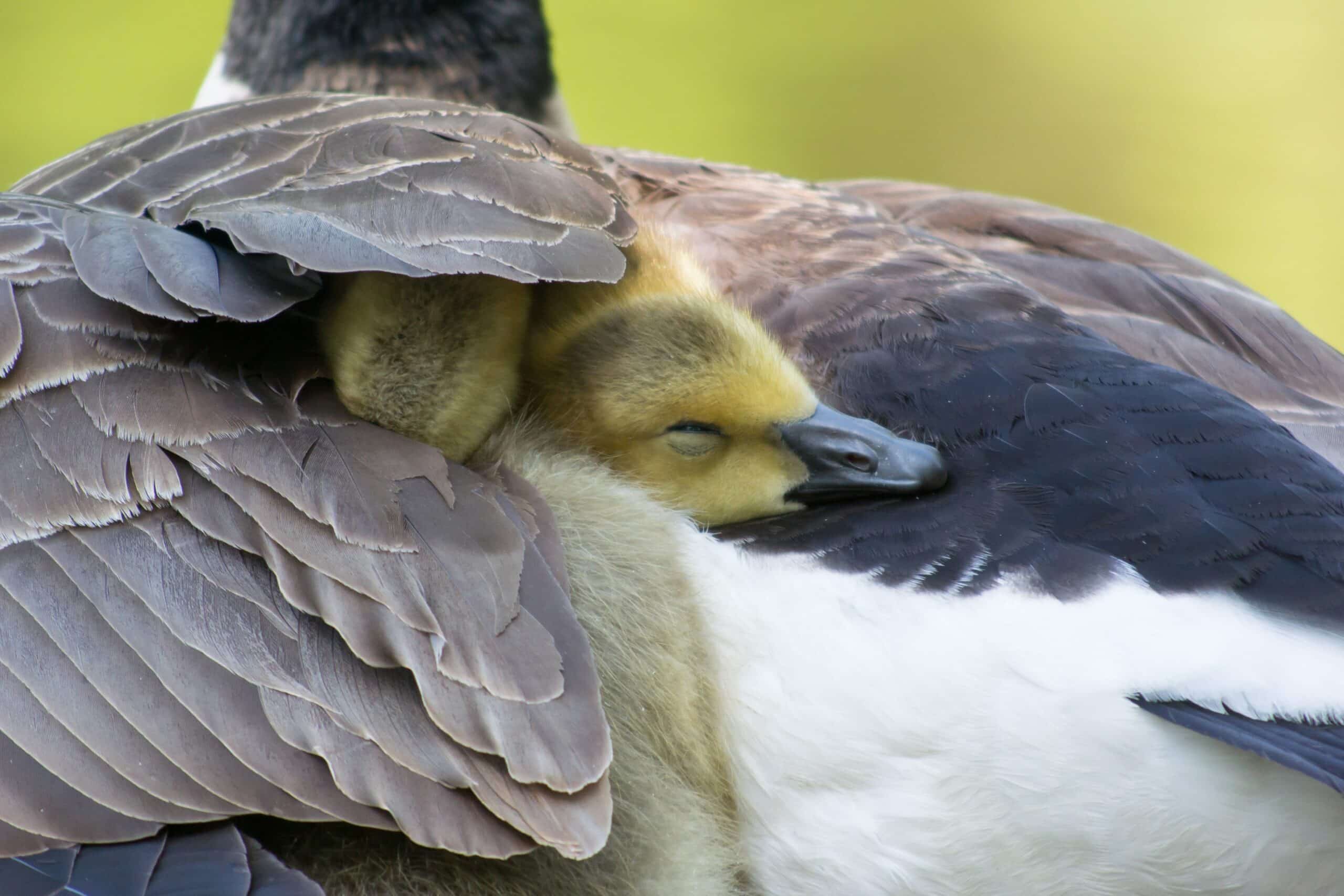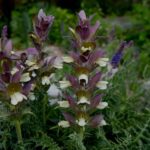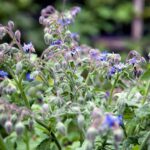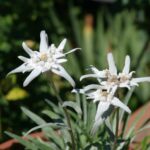Yarrow is a perennial flowering plant that is widely known for its beauty, resilience, and versatility. Its common name comes from the Greek hero Achilles who used it to treat his warriors’ wounds. Yarrow is an easy-to-grow and low-maintenance plant that can thrive in many different environments, making it a popular choice for both beginner and experienced gardeners. In this article, we will explore how to grow and care for common yarrow in your perennial garden.
The first step when growing yarrow is understanding the perfect conditions it needs to thrive. Yarrow prefers full sun or partial shade and well-drained soils with average fertility. It can be grown in a wide range of temperatures and soils, but soil pH should be between 6.0 and 7.5 for optimal growth. Additionally, yarrow requires at least one inch of water per week during the growing season in order to stay healthy and vibrant.
Finally, proper care of common yarrow ensures that it remains beautiful throughout the season. Deadheading spent blooms will encourage new growth as well as reduce self-sowing of the plant’s prolific seeds; you may also want to divide established clumps every few years to maintain their vigor. Common pests such as aphids or spider mites can be controlled by using an insecticidal soap spray or neem oil solution if needed. With these tips in mind, you are ready to start growing your own stunning yarrow!
Yarrow Varieties
Yarrow is like a kaleidoscope of color: its varieties vary in hue, form and size. As an easy-to-grow perennial, yarrow is ideal for gardeners looking to add beautiful blooms to their flower beds. Whether you’re an experienced gardener or new to the game, there are plenty of types of yarrow to choose from.
Achillea millefolium is the most common variety and produces large clusters of flowers that bloom in white, yellow and pink shades. Achillea filipendulina has feathery foliage and flat heads of fragrant yellow or pink flowers, while Achillea ptarmica ‘The Pearl’ boasts bright white flowers with yellow centers. If you’re looking for something more compact, try Achillea x hybrida ‘Moonshine,’ which grows no taller than 2 feet and features bright yellow blooms with gray-green foliage.
No matter which type you pick, all yarrows love full sun and well-drained soil with adequate moisture. With proper care, they’ll bloom throughout summer with minimal maintenance. Plus, they attract butterflies while repelling pests such as deer and rabbits – making them a great option for low-maintenance gardeners!
Where To Plant Yarrow
Achillea, or yarrow, is a beautiful and easy-to-grow perennial that can add stunning color and texture to any landscape! It’s truly a gift from the gods of gardening. Here are just a few reasons why:
- Yarrow comes in a variety of colors, including pinks, yellows, whites and purples.
- The foliage is feathery and full of texture.
- Plus, it’s drought tolerant!
When it comes to where to plant yarrow, there are certain rules of thumb you should follow as a botanist and gardener. First off, some cultivars prefer shade while others need plenty of sun. Make sure you know which one you have before planting so your Achillea doesn’t suffer from an extreme case of sunburn! Additionally, these plants do best in well-draining soil with lots of organic matter added to help retain moisture but still keep air circulating around the roots. Finally, be sure to space them about 1-2 feet apart for proper airflow and adequate room for growth.
Yarrow plants are fairly low maintenance once planted in their ideal location; however, they do require some special attention if you want them to reach their full potential. Keep reading to learn more about how much sun your yarrow needs for thriving growth!
Sun Requirements For Yarrow
As the old adage goes – ‘The right plant in the right place’ – it is important to pay attention to the sun requirements of yarrow when planting in your garden. Yarrow is a hardy perennial that typically thrives in full sun or partial shade, depending on the variety. Soil conditions are also important, but this article will discuss sun requirements for growing yarrow.
Firstly, let us look at what is meant by full sun and partial shade for yarrow. Full sun means that the plant should receive direct sunlight for at least six hours per day. Partial shade indicates that the plant should receive some indirect light during the day, usually from dappled sunlight or an area with morning and evening shade with some midday sunshine.
When planting yarrow in full sun, it’s best to choose varieties such as Achillea millefolium ‘Moonshine’ or Achillea millefolium ‘Red Beauty’ which can tolerate more intense heat and direct sunlight and have better drought tolerance than other varieties. For those planted in partial shade, consider Achillea filipendulina ‘Cloth of Gold’ which has yellow flowers and grows best in a location where it receives plenty of light but not baking hot temperatures during midday.
By selecting a variety that suits your growing conditions and paying attention to how much sunlight they receive, you can ensure that your yarrow plants thrive all season long!
Soil Type For Yarrow
When it comes to soil type for yarrow, there are a few specifics to consider:
- Yarrow prefers well-draining soil that is high in organic matter.
- A sandy loam or clay loam will provide the best growing conditions.
- Adding aged manure or compost to the soil prior to planting can help it retain moisture and nutrients better throughout the growing season.
In addition, yarrow does not do well in overly wet soils, so if your climate receives a lot of rain or snowfall during the winter months, you may want to amend the soil with peat moss to help improve drainage and reduce standing water around your plants. When planting yarrow, be sure to space them out enough so they have adequate air circulation around each plant – this will help prevent fungal diseases from spreading among your plants. With the right soil type and adequate spacing, you’ll be rewarded with beautiful blooms all summer long!
Planting Yarrow
Planting yarrow is an easy process that requires minimal effort. When planting yarrow, it’s best to use a well-draining soil as the plant doesn’t tolerate wet roots or soggy soil. If your soil isn’t draining well, you can add organic matter such as compost or peat moss to improve the drainage. Yarrow prefers full sun although it will do just fine in partial shade, so choose a spot that gets at least 6 hours of direct sunlight each day. Planting yarrow in early spring gives it plenty of time to become established before winter.
When planting yarrow, make sure to space the plants about 18 inches apart for maximum air circulation and growth potential. Dig holes slightly larger than the root ball of each plant and gently loosen any roots before placing into the ground. Backfill with soil and press down lightly around each plant to ensure good contact with the soil and eliminate any air pockets. Water thoroughly after planting and then keep moist until the plants are established in their new home.
Yarrow is a hardy perennial that requires little maintenance once planted, making it an ideal choice for beginner gardeners who want to create a beautiful landscape without breaking their back!
Water Requirements For Yarrow
Yarrow is a beautiful and easy-to-care-for perennial that will add color and texture to your garden. It’s water requirements are just as effortless to maintain. Although yarrow prefers dry soil, proper watering is essential for optimal growth and blooming. Let’s explore the key points for keeping your yarrow healthy:
• Watering frequency: Yarrow should be watered during its active growing season, usually in spring or early summer. The amount of water needed will depend on the type of soil, but generally speaking it should be watered deeply once a week or every two weeks if there has been enough rainfall.
• Soil moisture: In order to ensure that yarrow gets the right amount of water, it is important to monitor the soil moisture levels. If the soil feels too dry when you check it with your finger, then it needs more water. If it feels damp or wet, then you can wait until the next watering cycle before giving your yarrow another drink.
• Mulching and drainage: Mulch around plants to help preserve moisture and keep the roots cool and moist during hot weather spells. Make sure there is good drainage so that water does not stay pooled up around the base of plants which can cause root rot and other issues.
These simple steps will help ensure that your yarrow stays healthy and blooms abundantly for many years to come!
Fertilizing Yarrow
Nurturing a yarrow plant is akin to caring for a beloved child; it requires patience, dedication, and careful attention. Fertilizing your yarrow is an important step in making sure it thrives in its environment. A balanced controlled-release fertilizer should be incorporated into the soil when planting, and then every spring thereafter. An all-purpose 10-5-5 formula is ideal for most varieties of yarrow; however, if you have a large area of the plant, you may want to opt for a higher nitrogen fertilizer such as a 15-10-10 blend. For container plants, use half the recommended rate on the package instructions.
To ensure optimal growth of your yarrow plants, fertilize throughout their growing season with liquid fertilizer or organic fertilizers like fish emulsion or compost tea. Additionally, adding organic matter like aged manure or compost will provide long lasting nutrients to the soil. If you want to give your plant an extra boost of nitrogen during peak growth periods, you can top dress with a light layer of slow release granular fertilizer or sprinkle some dried blood meal around the base of each plant.
Adopting these fertilization practices will help ensure that your yarrow plants are healthy and robust year after year. With proper care and nutrition they’ll bring color and life to any garden setting!
Pruning And Deadheading Yarrow
Pruning and deadheading yarrow is an important step in maintaining a healthy perennial garden. Take, for instance, the story of Mary: Mary had a large flower bed with yarrow, and she noticed that it was becoming overgrown and unruly. To help keep her garden looking neat and tidy, she took some time to prune back the yarrow. Here are four steps to remember when pruning your yarrow plants:
- Prune off any flower heads once they have gone to seed or faded away.
- Cut back any stems that look wilted or spindly in order to encourage new growth from the base of the plant.
- Remove any infected or diseased stems or leaves to prevent the spread of disease through your garden.
- Thin out dense patches of foliage so that light can reach all parts of the plant and promote even growth across the entire clump of yarrow.
When pruning yarrow plants, always use sharp tools such as scissors or secateurs to ensure a clean cut without damaging the plant tissue. This will help reduce stress on the plant and encourage faster recovery following pruning. You can also deadhead spent blooms during the growing season by simply pinching off individual flowers as they begin to fade away from their vibrant coloration. Deadheading prevents your yarrow plants from going to seed prematurely and allows them to continue flowering throughout their bloom period for maximum visual impact in your landscape design!
Controlling Pests And Diseases
Yarrow is a common garden plant that can be easily grown and maintained. It is an attractive addition to many gardens due to its delicate foliage and vivid flowers. Surprisingly, yarrow is a hardy plant, but it can still suffer from pests and diseases, which can be difficult to control.
When it comes to controlling pests and diseases in yarrow, prevention is key. Regular maintenance such as mulching and pruning will help keep the plant healthy and reduce the risk of infection or infestation. There are also some specific steps you can take to protect your yarrow from harmful pests and diseases.
The first step in pest control is monitoring for signs of insect damage. Look for holes in leaves, discoloration, or wilting as these could indicate an infestation. If you spot any of these signs, remove the affected parts of the plant immediately. Additionally, it’s important to regularly inspect your plants for signs of disease such as powdery mildew or root rot. If you do identify any issues with your yarrow, there are several treatments available that can help eliminate the problem:
• Chemical: Spraying with a pesticide or fungicide may be necessary to get rid of severe infestations or disease outbreaks. • Biological: Introducing beneficial insects like ladybugs or lacewings into the garden can help keep populations of damaging insects in check without using harsh chemicals. • Organic: Applying organic fertilizer or compost can help encourage healthy growth and discourage pests and disease-causing fungi from taking hold on the plants.
These preventive measures will go a long way towards keeping your yarrow flourishing for years to come! With proper care, regular monitoring, and swift action when needed, you should have no trouble maintaining healthy yarrow plants in your garden.
Propagating Yarrow
Propagating yarrow? It’s not rocket science! Or is it?
For the botanically-minded, propagating yarrow can be a joyous experience. After all, who doesn’t love creating something from nothing? On the flipside, for those with fewer green thumbs, growing yarrow from cuttings can be a daunting task. Fortunately, there are few simple steps to ensure success:
• Preparing the Cuttings: In order to propagate yarrow correctly, you must start by taking cuttings of healthy stems in late spring or early summer. Make sure to select stems that are about 4 inches and have several sets of leaves on them. Trim off any flowers and remove the lower leaves near the base.
• Rooting Cuttings: After preparing your cuttings, you’ll need to provide them with an environment conducive to root formation. You can use prepared soil or perlite mixtures and make sure they receive plenty of humidity and light but not direct sunlight.
• Transplanting Yarrow: Once your cuttings have taken root and developed new growth, it is time to transplant them into individual pots or larger containers outside in well-draining soil. Be sure to water regularly and keep an eye out for pests or disease that could inhibit their growth.
The careful process of propagating yarrow is easily achievable with a little patience and dedication – so don’t be afraid to give it a go! And before you know it, you’ll have an abundance of these colorful plants at your disposal.
Growing Yarrow From Seed
Spreading sunny cheer and a profusion of color, yarrow is a delightful addition to any garden. Cultivating this hardy herb is a breeze – the only requirement being patience. Growing yarrow from seed requires some know-how and perseverance, but the rewards are plentiful.
A great start to growing yarrow from seed is to understand its unique germination process. Unlike other seeds that rely on soil temperatures, yarrow seeds need light to germinate – so it’s important to sprinkle them on top of the soil rather than burying them. This will give the tiny seeds enough exposure for successful sprouting. Additionally, you’ll want to ensure that the sowing site has plenty of drainage and good air circulation for best results.
Once the seeds have been sown, it’s time for regular maintenance such as weeding and watering as necessary. You’ll also want to keep an eye out for pests or diseases that can harm your plants. With proper care and attention, soon you’ll be able to enjoy lush foliage in your garden!
In no time at all your garden will be alive with beautiful blooms that make a wonderful addition to any landscape – plus they attract beneficial pollinators like bees! And while you wait for those showstopping flowers, companion planting with yarrow can help create an inviting atmosphere around your garden beds.
Companion Planting For Yarrow
Companion planting is an important part of caring for yarrow. When choosing companion plants for yarrow, look for plants that thrive in the same type of soil and climate as the yarrow. Additionally, it’s best to choose a mix of annuals and perennials, with some being taller than the yarrow and others being lower growing. Some of the best companions for yarrow are daylilies, daisies, phlox, echinacea, coreopsis, lavender and ornamental grasses. These plants will not only add beauty to your garden but also help promote good growth of the yarrow.
It’s important to keep in mind that socializing too many different types of plants together can lead to overcrowding and unhealthy growth. To avoid this issue, take special care when selecting companion plants for your yarrow by ensuring that you’ve chosen plants that prefer similar growing conditions. Additionally, make sure you space them out properly so each plant has enough room to breathe and grow healthily. This way you can create a beautiful garden full of life without overcrowding any one species.
When it comes to companion planting with yarrow, don’t be afraid to experiment! Try combining different varieties of perennials together or mixing up flowers and ornamental grasses to create a unique landscape design that will make your garden stand out from the rest. With a bit of creativity and patience, you can easily create a stunning outdoor oasis that’s perfect for enjoying summer days in!
TIP: For maximum impact in your garden design, try creating contrast between your companion plants and the delicate foliage of your yarrow by using bold colors like yellow or purple!
Harvesting Yarrow
Harvesting yarrow is an important part of caring for the perennial. It is believed that if harvested at the right time, it will encourage more blooms and healthier foliage. Investigating this theory, it can be seen that cutting back the flower stalks after flowering will reduce the amount of energy used to form seed heads, and instead direct energy towards producing more flowers. While harvesting yarrow can be done any time after flowering, it should be noted that this practice should not take place too late in the season as it may weaken the plant’s winter hardiness.
It is recommended to cut stems back to just above a set of leaves or buds with bypass pruners or sharp scissors, as these tools can help ensure clean cuts which will reduce any potential damage to the yarrow’s foliage and stems. Additionally, when harvesting yarrow, always wear protective gloves to avoid contact with its sap which can cause skin irritation.
Finally, it is recommended not to discard unwanted or excess yarrow stems and foliage; instead they should be composted so as not to waste any potential nutrients that could benefit other plants in your garden. TIP: Be sure to add mulch around your yarrow plants after pruning them back; this will help retain moisture in their soil while also providing extra insulation during colder months.
Using Yarrow For Landscaping
Yarrow is an incredibly versatile plant, both in terms of its uses and its ability to grow in a variety of conditions. In fact, yarrow is so useful that approximately 97 percent of gardeners report using it for landscaping purposes. With this in mind, let’s take a closer look at how to use yarrow for your landscaping needs.
When it comes to landscaping with yarrow, the options are virtually limitless. Yarrow can be used as a ground cover, border edging, or accent piece in rock gardens and other areas of your yard. It can also be planted along pathways or driveways for a beautiful display when in bloom. Furthermore, many gardeners will use yarrow as a companion plant due to its ability to attract beneficial insects like butterflies and bees and repel certain pests.
Additionally, yarrow is fairly low-maintenance once established which makes it ideal for larger landscapes where upkeep can be tedious and time-consuming. All you have to do is make sure the soil remains moist during dry spells and trim the plant back after flowering has finished. Its thick foliage also provides an excellent source of protection from weeds which makes it an all-around great choice for landscaping projects of any size.
With its versatility and ease of care, yarrow is an excellent choice when considering plants for your landscape design project. From providing stunning blooms to repelling pests and offering protection from weeds, this hardy plant should definitely be considered when choosing what plants are best suited for your home garden or outdoor living space.
Yarrow As A Cut Flower
Yarrow is a popular choice for use as a cut flower. Its delicate and long-lasting blooms make it an ideal choice to be used in arrangements and bouquets. Yarrow comes in a variety of colors, including white, yellow, pink and red, so there’s sure to be something to match any color scheme. Its foliage also adds texture and interest to the arrangement.
When harvesting yarrow as a cut flower, it’s important to pick the stems when the flowers are just beginning to open. Cut them early in the morning before the heat of the day has taken its toll on them. Be sure to use sharp pruners or scissors when harvesting so that you don’t damage the stems.
Once cut, yarrow will last up to two weeks with proper care. Place the stems immediately into water after cutting, then recut them underwater at an angle and strip off any leaves that would fall below the waterline. Keep your vase filled with fresh water daily for optimal longevity of your yarrow blooms!
Frequently Asked Questions
How Long Does It Take For Yarrow To Germinate?
Have you ever wondered how long it takes for yarrow to germinate? It’s a valid question to ask when growing this beautiful and hardy perennial flower in your garden. As an experienced botanist and gardener, I can confirm that the germination period of common yarrow is usually between 7 to 21 days, depending on the variety, soil temperature, and other environmental factors.
When planting yarrow seeds, make sure to sow them directly onto a freshly prepared bed that is free of weeds. The seeds should be covered with a thin layer of soil – no more than 6 mm – and watered thoroughly. Furthermore, keep the soil moist but not soggy by watering regularly but not too often; too much water can cause fungal diseases. You should also note that yarrow grows best in full sun or partial shade with well-drained soil.
Yarrow is easy to grow and care for if you follow these instructions carefully. With a bit of patience and diligence, you will soon have beautiful blooms in your perennial garden. So why wait? Get those seeds planted now!
Is Yarrow Suitable For Container Planting?
Yes, yarrow is suitable for container planting. In fact, container gardening offers many advantages to this gorgeous flower. It’s easy to get started with yarrow, as long as you keep a few things in mind. To put it simply, it’s a piece of cake!
When planting yarrow in containers, look for ones that are at least 10 inches deep and wide. This will provide enough space for the roots to spread out and form a strong base. You’ll also want to use a well-draining potting mix to make sure your plants don’t suffer from soggy soil conditions. Fertilize your plants every month or two during the growing season with an all-purpose fertilizer and water regularly.
Yarrow is an incredibly resilient plant that can even handle some drought conditions if necessary. To keep your yarrow blooming throughout the season, deadhead any spent flowers by cutting them off at the stem base. As long as you give it plenty of sun and good drainage, your yarrow will thrive in its new home!
Is Yarrow Toxic To Pets?
Yarrow, or Achillea millefolium, is a beautiful and useful perennial herb known for its medicinal properties. However, it’s important to be aware of the potential risks when considering adding this plant to your garden. Is yarrow toxic to pets? Let’s explore this question and determine how best to protect both your furry friends and your prized plants.
First and foremost, it’s important to note that yarrow can be toxic if ingested by cats and dogs. This fragrant herb contains compounds known as furanocoumarins which can cause skin irritation in some animals. Additionally, consuming large amounts of the plant can lead to gastrointestinal distress such as vomiting or diarrhea in cats and dogs. To help keep your pets safe:
- Keep yarrow out of reach of animals – either by planting them away from areas where they may access it or by covering the area with a protective barrier such as a fence;
- Monitor your pet closely when outdoors so that if they do come into contact with the plant you can act quickly;
- Consider using companion planting techniques to deter animals from accessing the plants;
- Provide plenty of other safe chew toys for your pet to enjoy instead.
Fortunately, there are several things you can do to make sure yarrow remains a safe addition to your garden while still reaping the benefits of its many uses. With proper care and consideration, this hardy herb will bring beauty and practicality to any outdoor space while keeping you furry family members safe!
Is Yarrow Resistant To Deer And Other Animals?
Yarrow is a resilient, low-maintenance garden plant that is highly resistant to deer and other animals. Its scientific name, Achillea millefolium, comes from the Greek hero Achilles who used it to treat his soldiers’ wounds during the Trojan War. Yarrow has a long history of being used in gardens, with its fragrant blooms and feathery foliage providing interest and texture in any landscape. Here are four tips for growing and caring for yarrow:
Plant yarrow in well-drained soil in either full sun or partial shade. Yarrow will not tolerate overly wet soils, so be sure to provide at least 6 hours of direct sunlight every day.
Water your yarrow only when necessary – usually once or twice a week depending on rainfall levels – as over-watering can lead to root rot. Make sure the soil is dry before adding more water.
Fertilize lightly with a slow-release fertilizer once a year in the springtime to help promote healthy growth and vibrant blooms.
Deadhead spent flowers regularly throughout the season to extend blooming times and keep plants looking their best. Additionally, periodic pruning helps maintain shape and encourages new growth.
Yarrow is an easy-to-care-for plant that makes a great addition to any garden while also helping protect other plants from deer damage. With its expansive flower heads, feathery foliage, and bright colors, this perennial is sure to bring life into any outdoor space – no matter what size or style!
Does Yarrow Attract Bees Or Other Pollinators?
A vivid yellow carpet of yarrow flowers is a sight to behold. This long-lasting bloomer is a favorite among gardeners and pollinators alike, with its bright and cheerful clusters of blooms. But the question remains: does yarrow attract bees or other pollinators?
The answer is a resounding yes! Yarrow’s fragrant flowers, which often appear in shades of white, pink, red, and yellow, are magnets for bees and other beneficial insects such as butterflies and hoverflies. Its flowering period also lasts for several months, giving many species plenty of time to visit the flowers for nectar and pollen. Furthermore, its flower heads are packed with individual florets that provide lots of nectar sources for these pollinators.
Gardeners looking to help support their local bee population should consider adding yarrow to their landscape. Not only will it bring added beauty and color to your garden, but it will also attract a variety of pollinators that will help keep your plants healthy by aiding in the process of cross-pollination. With its easy care needs and long blooming season, yarrow provides both beauty and function in any perennial garden.
Conclusion
Yarrow is a versatile perennial that can be used in a variety of ways. Its delicate blooms and easy-to-care-for nature make it a great addition to any garden. It’s hardy, deer resistant and toxic to pets, so it’s great for those with animals or furry friends. It’s also perfect for attracting bees and other pollinators, as well as providing an attractive ground cover.
Yarrow is often compared to a faithful companion that will always be there when you need them. Just like this reliable flower, having yarrow in your garden can bring joy and peace of mind to the gardener who tends to them. For some, it brings an element of calmness while they watch their yarrow grow and blossom with each season. The more time and attention you put into caring for your yarrow, the more beautiful it will become – just like any relationship!
Overall, Yarrow is an easy-to-maintain and wonderfully unique flower that can bring beauty to any garden space. With its delicate blooms and low maintenance requirements, Yarrow is sure to bring joy and color to any landscape!





























